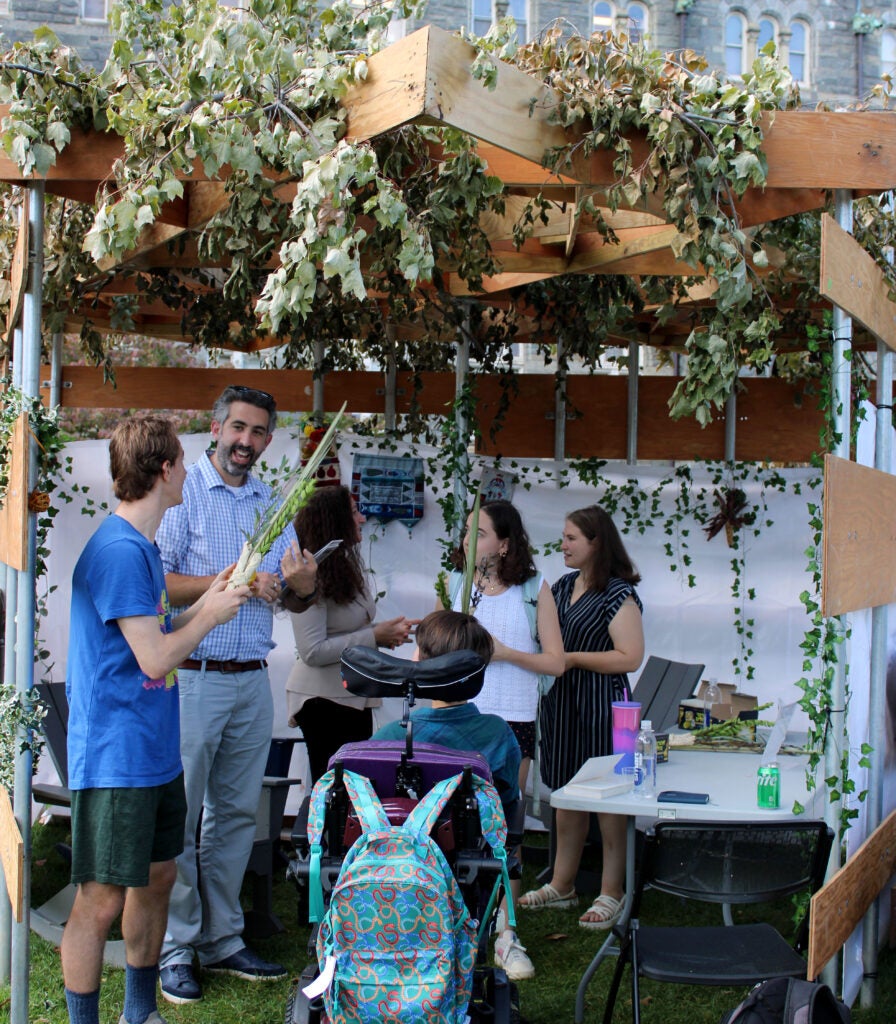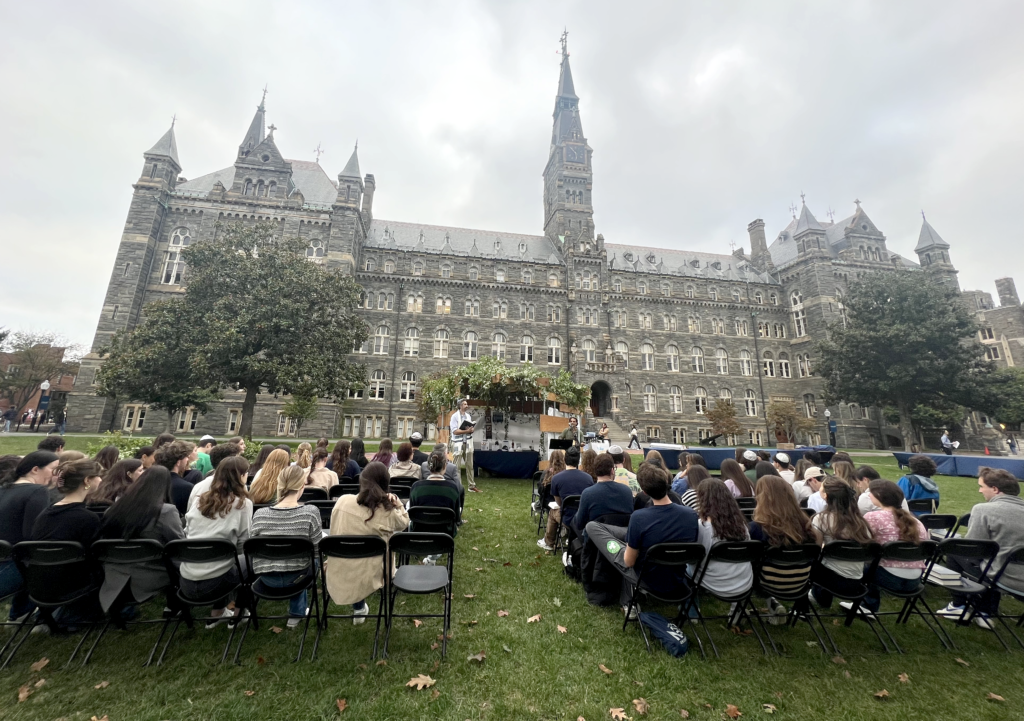Making a House a Home
Rabbi Daniel Schaefer reflects on the High Holy Days.
By Rabbi Daniel Schaefer, Interim Director for Jewish Life
The fall is a busy time on the Jewish calendar. The new year begins with Rosh Hashanah, followed ten days later by Yom Kippur, the holiest day of the year, and a few days afterward the week-long fall harvest of Sukkot.
At Georgetown, we’re blessed to be able to build our sukkah (hut) on the Healy Lawn and to host meals, events, and services there all week. The sukkah is meant to remind us of the temporary shelters that our ancestors lived in while they wandered in the desert for forty years. Its walls are flimsy and its roof is made of branches, with enough space to let in some sun and rain.
While guest-lecturing in a recent Problem of God class, Professor Judd Birdsall reminded me of the difference between a house and a home. When you’re building a house you want to make sure the walls are secure, the roof doesn’t leak, and the electricity and plumbing work correctly. But that alone won’t make it a home. What makes it a home home is the spirit of warmth and hospitality that you infuse it with and the memories created there.
Every year, Rosh Hashanah and Yom Kippur help us build a house. This September, hundreds of students joined us for holiday meals and over five hundred members of the community joined us for services in Gaston Hall. But Sukkot reminds us to build a home. Its broken walls and open roof help teach us that we can create incredible connections and memories wherever we are. Celebrating Shabbat over Sukkot (pictured below) with over eighty people gathered on Healy Lawn was a beautiful reminder that Georgetown is a Catholic and Jesuit home for all peoples and that we are encouraged to be proud and celebrate our Jewish heritage here.
That sense of home was so important after the attacks on Israel. Our house of joy became a house of mourning, but by being together in pain, suffering, and solidarity, we strengthened the sense of community and belonging. We hope that the future holds more joy than suffering and more peace than pain, but we also know that we are building a home here together, one that is big enough to hold our differences, deepen our sense of belonging, and help us find meaning in even the most difficult moments.

